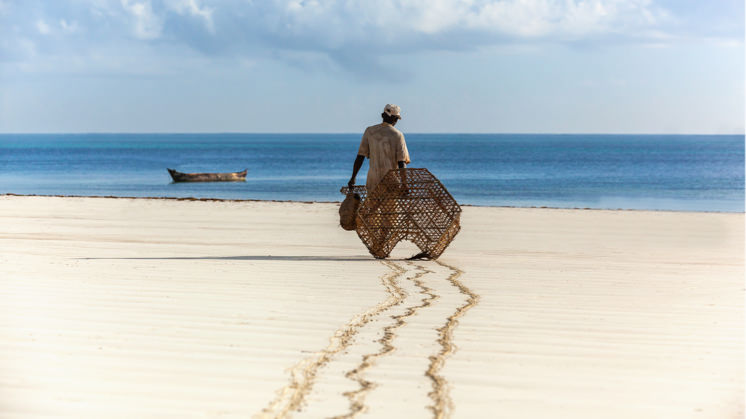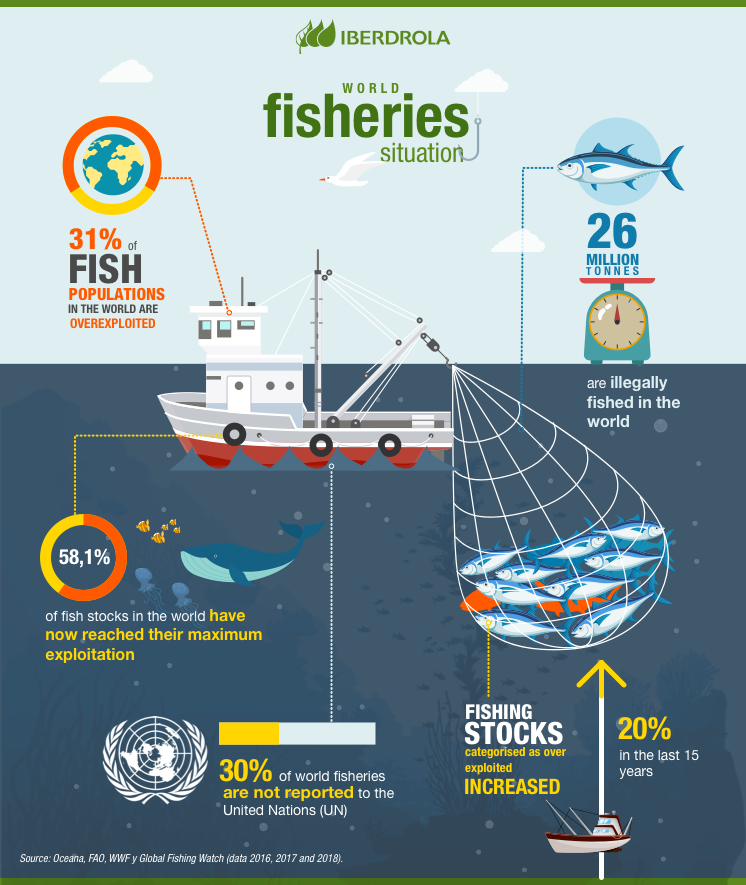Sustainable fisheries
The survival of marine fauna depends on sustainable fishing
The overexploitation of the seas and oceans is leaving them without fish. This is confirmed by the United Nations Food and Agriculture Organization (FAO) in one of its latest reports, which calls for a sustainable fishing model to ensure the survival of species and fishing activity.

The peace and silence that reign in the ocean depths are increasingly being disturbed. At first glance, life under water continues as normal, but behind this infinite calm lies a terrible secret: the underwater world is becoming empty. The World Wide Fund for Nature (WWF) states in its 2018 Living Planet report that since 1950 we have extracted almost 6 billion tons of fish and other invertebrates from the seas which makes the fishing industry the main threat to marine wildlife.
Problems caused by overfishing
The loss of marine biodiversity also has negative consequences for the more than 3 billion people in the world who live off the richness of the seas and coasts, according to the United Nations (UN), as well as for the fishing fleets that are forced to sail hundreds of kilometres further to cast their nets in more productive waters.
These forced journeys in turn create new problems such as the overexploitation of other fishing grounds and the outbreak of territorial conflicts, especially off the coasts of Africa, Latin America, and south and north-east Asia, the continent with the greatest fishing activity in the world. In addition, the impoverishment of the seas, together with the lack of resources in the poorest fleets, encourages illegal fishing, which generates 36 billion dollars annually, degrades marine ecosystems and endangers food security.
The state of marine fauna
The UN Food and Agriculture Agency (FAO) asserts that the increase in intensive fishing has compromised the survival of 33.1% of commercial species, leaving them without time to recover between catches. For example, in 2018, the FAO published a report that stated overfishing in the South-East Pacific and the South-West Atlantic affects more than 58% of the fish populations that inhabit them, while in the Mediterranean and the Black Sea the figure exceeds 62%.
The State of World Fisheries and Aquaculture, a report published biannually by the FAO, warns that fish production has doubled since 1960. In 2016, it broke its historical record with 171 million tons and an average consumption of 20.3 kilos per year person. This exponential increase in demand has led to the overexploitation of species such as the Alaska pollock, the anchovy and skipjack tuna, among others, which endangers food sustainability.

VER INFOGRAFÍA: The state of the world's fisheries [PDF]
Advantages of sustainable fishing
Sustainable fishing is a more artisanal and small-scale method with social, economic and environmental benefits, some of which are based on the FAO Code of Conduct for Responsible Fisheries. Some of these are summarised below:
Protects marine fauna
Sustainable fishing respects marine ecosystems and adapts to the reproductive rate of fish to maintain a balance and ensure the survival of all species.
Uses selective methods
Sustainable fishing rejects the indiscriminate capture of fry and endangered species or those without commercial value.
Avoids waste
In sustainable fishing, the bycatch is used, for example, to make fishmeal to minimise food waste.
Contributes to food security
Sustainable small-scale fisheries account for 66% of all catches destined directly for human consumption.
Generates jobs and is more responsible
Sustainable artisanal fishing provides employment for 90% of the global fishing industry and is the basis for the development of small fishing communities.
Reduces pollution
Sustainable fishing generates less waste, minimises energy consumption and reduces the use of chemicals that damage the ozone layer.
Certifies the sustainability of the catches
International standards such as the MSC (Marine Stewardship Council) Standard determine whether a fishery is sustainable and is being well-managed.
The opposite of sustainable fishing is the so-called destructive fishing. The latter uses more aggressive methods — such as trawling —, makes indiscriminate catches and prioritises productivity over environmental protection. In addition, it only uses 60% of each catch and uses polluting gases such as chlorofluorocarbons (CFCs) and hydrochlorofluorocarbons (HCFCs).
Sustainable aquaculture
Fish farming, both in coastal and inland areas, is a booming activity worldwide. The FAO believes that a sustainable aquaculture strategy is based on these six principles:
- Fair remuneration for aquaculturists for their work.
- Equitable distribution of the costs and benefits.
- The creation of wealth and high-quality employment.
- A model that guarantees food security.
- Environmental management that benefits future generations.
- Sustainable growth and the proper organisation of authorities and industry.




